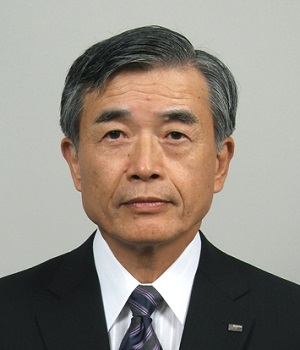Restarting Japan’s Nuclear Industry: A Commitment to Safety
From the Top
Vol 24 No 2 2018
14 July 2016
 In light of the nuclear accident at the Fukushima-Daiichi Nuclear Power Station in 2011, Japan's nuclear industry has undertaken a deliberate and thorough approach to safely restarting the nation's nuclear units.
In light of the nuclear accident at the Fukushima-Daiichi Nuclear Power Station in 2011, Japan's nuclear industry has undertaken a deliberate and thorough approach to safely restarting the nation's nuclear units.
When considering the reasons for restarting these units, it is important to understand the characteristics of Japan's energy situation. Japan has no indigenous energy resources. There are no pipelines or transmission grid connections with neighbouring countries. Hence why nuclear power has been an important base-load power source for the country. For energy security, CO2 emission reduction, and economic competiveness, the industry is committed to safely restoring nuclear units to operation.
Currently, Japan has 42 operational nuclear units, with three units under construction. Sixteen units are permanently closed for decommissioning. All of Japan's operational units were shut down following the Fukushima Daiichi accident. Stringent new regulatory requirements were developed for the entire fleet of plants. These requirements provide an added level of regulatory assurance that the plants will operate safely.
Many units continue to work toward compliance with these requirements. Electric power companies have submitted safety assessment reports for 26 units to the regulator; three units have also filed applications for plant life extension.
To date, four units have received approval to restart. Sendai units 1 and 2 have restarted and are in full commercial operation. In this April, earthquakes hit the Kyushu Island. The fault line runs roughly 60 kilometres northeast of Sendai 1 and 2. Accelerations observed at the station were sufficiently low compared against the maximum acceleration assumed in the design.
Takahama units 3 and 4 were approved for commercial operation, but are currently shut down pending resolution of a district court order to halt operation of the units. The order came in response to a petition by 29 citizens claiming that plant owner had not sufficiently proved the safety of the two units. Although the utility is appealing the decision to a higher court, the units will remain shut down until the issue is resolved.
The Takahama situation highlights the complex and often frustrating path toward reestablishment of Japan's commercial nuclear power program. The technological aspects of meeting stringent new regulations are challenging. But even more difficult is the ability to restore the public confidence in our industry that ultimately will allow us to operate our plants. Enhancing nuclear safety is the overriding priority in the Japanese industry. It is also important to promote two-way communications with the public, and to share common perceptions on nuclear safety.
In this context, industry leaders and members of the workforce have committed to always carry out their respective duties with the highest degree of integrity and transparency. Through patience, perseverance, and a dedication to excellence in all aspects of nuclear safety, the Japanese industry will continue to move toward resuming the operation of plants.